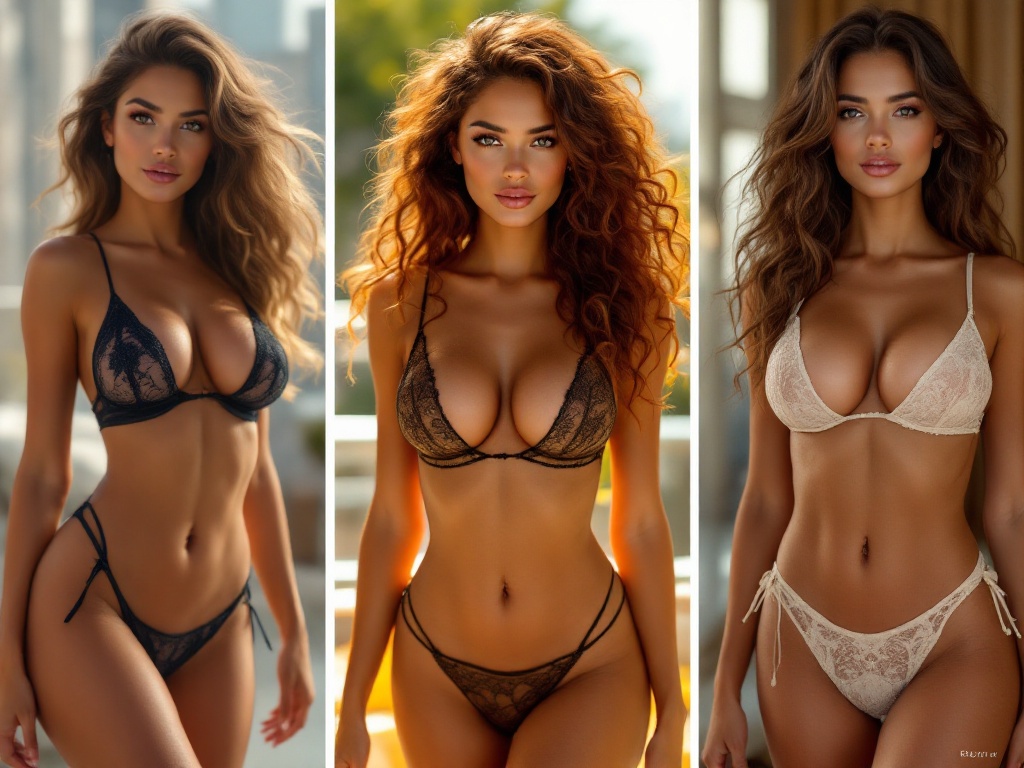The advent of artificial intelligence is reshaping numerous creative sectors, pushing the limits of what can be imagined and achieved. Notably, the world of erotic fiction is adopting AI technology to widen the horizons of storytelling. Picture an intriguing universe where readers can dive into fantasies featuring not just humans, but also fantastical creatures, robots, and other entities with distinct characteristics. The potential of AI-generated stories in this domain reaches far beyond just provocative tales. They provide avenues for engaging with diverse experiences and fetishes often absent in traditional storytelling. As AI becomes more advanced, grasping its role in building characters with believable anatomy is crucial for both writers and readers. This piece will examine how AI operates in this niche field, while also considering the visual charm and ethical issues involved in this kind of literature.
The Attraction of Non-Humanoid Erotica
Non-humanoid erotica enchants its audiences by offering a gateway to magical worlds inhabited by entities that surpass the limitations of mere mortals. What truly captivates readers is the sheer enormity of imaginative possibilities these beings offer—from mythical creatures to intelligent machines. Readers are drawn in by the chance to explore unorthodox relationships and desires, venturing beyond societal norms, thus granting unprecedented freedom for personal discovery. This genre not only aims to excite but also to provoke thought about sexuality and attraction. It encourages readers to step outside the norm, delivering striking views on intimacy and allure. Ultimately, the fascination lies in its ability to weave fantasy with plausible details, producing a thrilling yet believable narrative landscape.
Exploring the Non-Human Aesthetic
The allure of non-human aesthetics in erotic literature is rooted in imaginative design and anatomy that cater to individual tastes. A delightful tension exists where familiar desires meet alien visages. Non-humanoid entities can embody both beauty and repulsion, providing deep emotional experiences. The excitement burgeons from the unexpected mix of desire, strangeness, and wonder. By experimenting with unique attributes—such as glowing skin, mechanical elements, or feathered details—writers can stretch the boundaries of creativity. This variety not only captivates readers but also promotes broader representation.

Technological Underpinnings of AI Content Creation
To understand how AI crafts compelling tales, it’s imperative to dive into the technology driving this innovation. At the forefront is natural language processing (NLP), enabling AI to grasp and produce text that seems authentic and engaging. But NLP’s success hinges on the prowess of machine learning algorithms that underpin these AI systems. These algorithms analyze vast arrays of data to decipher narrative structure, themes, and character growth, channeling them into a storytelling prowess akin to human creativity. Understanding these foundations further underscores the role of user input in shaping the content generated. Without appropriate data, AI risks delivering narratives that fail to click with readers.
Natural Language Processing (NLP)
NLP allows AI to read and write like a human, acting as a bridge between technology and storytelling. By examining language structures, meanings, and contexts, NLP helps AI produce text with a natural flow resembling human writing. This technological framework becomes particularly significant in sensitive genres such as erotica, where striking a balance between explicitness and narrative depth is essential. Moreover, NLP assists in personalizing content based on user inclinations and emerging trends within the field, ensuring what is produced remains relevant. As AI perfects the nuances of human storytelling, the resulting narratives become more impactful and absorbing.

Machine Learning Algorithms
Diverse machine learning algorithms bolster AI’s capacity to craft authentic and engaging stories. Techniques such as neural networks and deep learning frameworks are employed to help the AI learn from existing materials and grasp the subtleties of storytelling. Training with varied content allows AI to recognize patterns typical of successful erotica—a fusion of imagination, emotional depth, and plausible anatomy. As AI technology progresses, these algorithms gain sophistication, expanding the horizons of non-humanoid erotica. Below is a concise table showcasing some of the primary algorithms utilized:
| Type of Algorithm | Explanation |
|---|---|
| Neural Networks | Utilized for detecting data patterns, aiding in creating content that fits the context. |
| Deep Learning | Empowers AI to learn from extensive data collections and understand complex storylines. |
| Reinforcement Learning | A method that refines outcomes based on feedback related to user preferences. |
Developing Characters with Authentic Anatomy
Bringing non-human characters to life is an artistic endeavor that blends creativity with anatomical accuracy. How does AI tackle this task to ensure characters are both imaginative and relatable? It must skillfully navigate fantastical biology while respecting fundamental physiological principles. For instance, designing a creature may integrate features like symmetry, balance, and functional design to bolster believability. Additionally, fully fleshed out character histories can offer robust context, deepening the connection with the audience. Paying attention to these details enriches the reader’s immersive journey.
Considerations of Anatomy
When crafting non-human characters, various anatomical considerations are crucial to their believability. These include proportions, symmetry, and the functionality of unique traits. This process ensures a meticulous balance between fantastic features and realistic movement, enhancing reader immersion. Anatomical principles lend grounding to these creations, inviting readers to suspend disbelief. Ultimately, the aim is to fashion characters that engage imaginations, blending fantasy elements with plausible details.

The Influence of User Engagement in AI-Driven Content
User participation profoundly shapes the realm of AI-crafted erotica, turning it into a shared space rather than a solitary one. By incorporating user preferences, AI can customize narratives to meet individual desires and fantasies. This personalization elevates each story, making it resonate more intimately with its audience. Through feedback, the narratives continuously evolve, creating an interactive space where fantasies are not just acknowledged but celebrated. Consider the elements frequently prioritized by users when interacting with AI-generated erotica:
- Character Variety: Preferences leaning toward different species or beings.
- Thematic Preferences: Interests in certain motifs, such as control dynamics or romantic narratives.
- Specific Scenes: Requests for particular settings or plots that appeal to personal fantasies.
Challenges and Ethical Reflections
Despite AI-generated erotica’s vast creative potential, it’s entwined with numerous challenges and ethical qualms demanding attention. As we delve into this domain, it’s imperative to ponder issues surrounding consent, representation, and the potential propagation of harmful stereotypes. The consent narrative is particularly salient, urging creators to uphold responsibility. Furthermore, the portrayal of diverse identities in non-human characters ignites discourse on empathy and acceptance. Bridging the gap between fantasy and ethical storytelling represents an evolving frontier, requiring open dialogue among creators and consumers.
Navigating Consent and Depiction
Placing a premium on consent in AI-generated erotica involves recognizing the boundary between fantasy and authenticity. While crafting narratives, writers and AI systems must prioritize healthy relationships and mutual respect among characters to convey positive messages. Representation adds further complexity, emphasizing embracing diverse identities—both human and beyond. Thoughtful integration of various perspectives amplifies inclusivity, enriching the work’s resonance across diverse audiences. Ultimately, responsible storytelling cultivates a welcoming atmosphere that appreciates desire’s intricate nature.
Conclusion
AI is fundamentally redefining the creation of non-humanoid erotica, merging cutting-edge technology with inventive storytelling. By comprehending AI’s foundational principles, creators can curate narratives that are engaging and anatomically plausible. As technology advances, so do the opportunities for diving into multifaceted desires. Nonetheless, it is crucial to tread this innovative path with ethical mindfulness, ensuring that as we explore new territories, we do so with awareness and accountability. With this approach, the domain of AI-generated erotica stands poised to revolutionize not only storytelling methods but also our understanding of our own desires.
FAQ
- What is non-humanoid erotica?
Non-humanoid erotica encompasses sensual content featuring characters and creatures that aren’t human, such as robotics, extraterrestrial beings, or legendary creatures. - How does AI generate content for non-humanoid erotica?
AI employs sophisticated algorithms and natural language processing to create stories shaped by user stimuli and pre-existing materials. - What ethical concerns are associated with AI-generated erotica?
Key concerns include matters of consent, diverse representation, and the inadvertent reinforcement of damaging stereotypes in narratives. - Can AI create unique characters in non-humanoid erotica?
Yes, leveraging biological principles along with user input, AI can design anatomically plausible and distinctive characters. - What are the benefits of using AI in content generation for erotica?
AI can boost creativity, provide tailored experiences, and produce content at scale, catering to a variety of tastes and interests.


